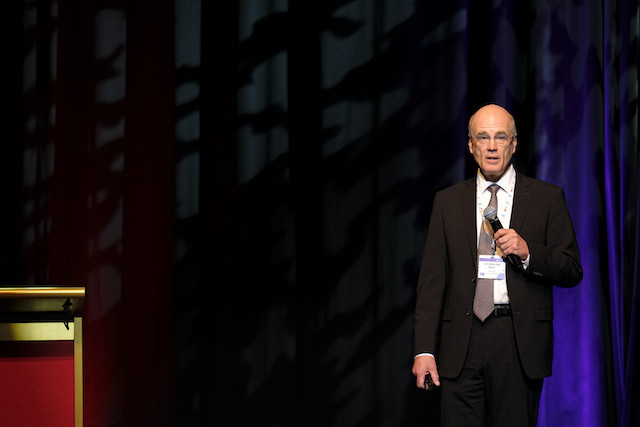The eighth partnership day, hosted at Casino 2000, gave centre director Björn Ottersten the chance to highlight the importance of partners who contribute €5m annually to the centre and make up 20% of its turnover.
“We think it’s a very efficient and good way of creating impact with the research we do. More than that, it strategically plays a very important role because it feeds back. The challenges and problems we encounter in practice, feed back into our fundamental research, which is the bulk of what we do,” Ottersten said.
The SnT’s first partners were the Post and SES, who remain among the 43 current partners and 4 spin-off projects. Today, SnT's biggest partner contributions are received in research in the area of autonomous vehicles, accounting for 25%.
Fintech growth
But one of the strongest growth areas for the SnT has been research into financial technology, in which it has 14 partnerships and which accounts for 24% of partner contributions.
The centre is also finding that fintech research has applications for other sectors, including legal and insurance. Last year, the SnT added law firm Linklaters to its partner list. “This is exciting as it’s the first time we have entered a research project with a legal firm. We think there is tremendous potential in this area,” Ottersten said.
A key trend, he observed, was the internationalisation of the centre’s activities, with international firms taking an interest in the technology being developed. American electronic payment system Ripple, which has a research agreement with the centre, is one such example.
Looking to the future, the SnT wants to further develop its cybersecurity specialisation, which today accounts for 11% of contributions. It is participating in three of the EU’s four cybersecurity networks to develop white papers that will lay the foundations for the Horizon Europe programme. The successor to Horizon 2020, Horizon Europe is a European Commission research and innovation programme worth €100bn. “Even though we’re a small country we can put Luxembourg on the map in certain areas,” Ottersten said, adding: “We also hope this eventually will become a physical hub for cybersecurity. There are good chances it could be placed here.”
